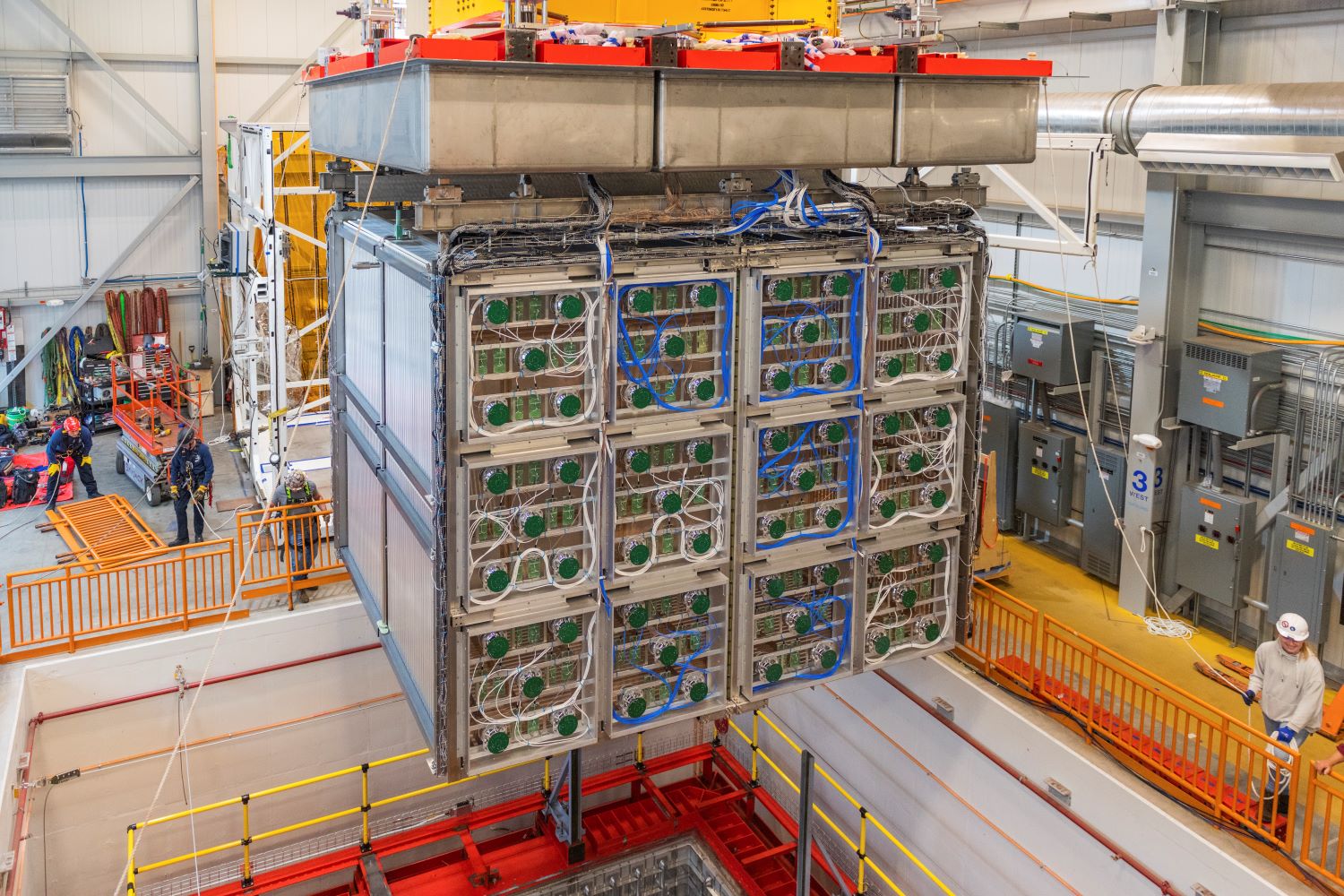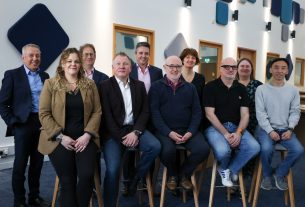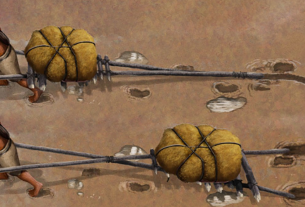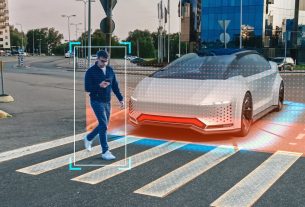UK researchers working as part of an international team of scientists, on the SBND project at Fermi National Accelerator Laboratory (Fermilab) has identified its first neutrinos.
This milestone marks a crucial step in the quest to uncover a potential fourth type of neutrino, a discovery that could reshape our understanding of the Universe.
Global collaboration
Part of a global collaboration involving 250 researchers from the UK, Brazil, Spain, Switzerland, and the US, SBND is a critical part of the Short-Baseline Neutrino programme at Fermilab.
Thanks to funding from the Science and Technology Facilities Council (STFC), researchers from universities across the UK are playing a pivotal role as founding members. They are contributing to the design, construction, commissioning and future physics research of the detector.
Elusive neutrinos
Neutrinos are the second most abundant particles in the Universe, yet their elusive nature makes them exceptionally difficult to detect and study.
They come in three known types (electron, muon and tau) and continuously oscillate between each of these types.
However, over the past 30 years, experiments have hinted at the existence of a possible fourth type which, if confirmed, could redefine what we know about the Universe.
A new era for physics
Lancaster University’s Professor Jaroslaw Nowak is the SBND UK Principal Investigator and the Chair of the SBND Institutional Board.
He said:
Seeing the first neutrino interaction in the SBND detector is a sign of a new era for us. We now redirect our efforts to answer the many unresolved questions with the vast amounts of data we’ll collect in the next few years.
David Schmitz, Co-Spokesperson for the SBND collaboration and Associate Professor of Physics at the University of Chicago, said:
It isn’t every day that a detector sees its first neutrinos.
We’ve all spent years working toward this moment and this first data is a very promising start to our search for new physics.
Challenging the gold standard
The Standard Model of particle physics, which explains how the Universe operates at its most fundamental level, serves as the gold standard for everything from high-intensity particle collisions to rare decays.
The discovery of a fourth type of neutrino would challenge this model, forcing a rewrite that could have significant implications for our understanding of dark matter and the Universe’s evolution.
Unparalleled precision
In addition to its role in the hunt for the fourth neutrino, SBND boasts an exciting physics programme of its own.
The SBND is capable of detecting up to 7,000 neutrino interactions daily, which is more than any other detector of its kind. This enables researchers to study neutrino interactions with unparalleled precision, particularly in the study of neutrino interactions with argon.
The knowledge and expertise gained from these studies, such as in detector and electronics design, are crucial technology demonstrators for future large-scale experiments.
This is particularly the case for the Deep Underground Neutrino Experiment (DUNE) at Fermilab, which is set to begin operations in the coming decade.
Significant UK contribution
Thanks to STFC funding, leading researchers from universities across the UK have been instrumental in designing and constructing a number of key technologies and components for SBND.
Anode Plane Assemblies (APAs)
In a purpose-built factory at STFC’s Daresbury Laboratory, UK scientists have built two of four APAs for SBND, the main components that capture neutrino signals.
Containing nearly 4,000 wires about the width of a human hair, these structures detect the electrons released when neutrinos pass through liquid argon, producing images of neutrino interactions with exceptional precision.
Cathode Plane Assembly (CPA)
UK researchers also designed and built the CPA, which generates a powerful 100,000 volt electric field that drives the electrons toward the APAs for detection.
Reflective panels
UK researchers developed highly reflective panels coated with a wavelength-shifting compound. These panels shift ultraviolet light to visible light, aiding in the detection of scintillation light produced by neutrino interactions.
Pattern recognition software
UK researchers led the development of a highly sophisticated pattern-recognition software. This included the Pandora package, dedicated to the detection of the neutrino interactions in the detector.
Looking to the future
The University of Manchester’s Professor Justin Evans, who is UK Principle Investigator of the DUNE APA project, said:
As we advance with SBND, the UK is well positioned to play a leading role in unlocking its groundbreaking scientific potential.
Our expertise across all areas of SBND physics enables us to drive research, leading to world-class measurements of neutrino properties, exploration of physics beyond the Standard Model, and a deeper understanding of how neutrinos behave.
At the same time, we are training our next generations of researchers, equipping them with the skills to lead the field when DUNE begins collecting data in the next few years.
International collaboration
Professor Mark Thomson, STFC Executive Chair, said:
The observations of the first detailed images of neutrino interactions in SBND is a huge milestone.
As part of the first multiple detector experiment searching for neutrino oscillations over short distances, the SBND detector could revolutionise our knowledge of the role of neutrinos in particle physics.
It also underscores the importance of international collaboration to address the big current questions about the fundamental nature of the Universe – in this case sterile neutrinos.
The UK has been a main partner in SBND from the outset. I remember when we were first discussing SBND in the context of building up UK expertise in the construction and operation of large Liquid Argon Neutrino detectors on the pathway to realising DUNE.
I am extremely pleased to see this new detector coming online and am looking forward to its role in unravelling the mysteries of neutrinos – the most mysterious of particles.
The universities
The universities or organisations involved or funded include:
- University of Edinburgh
- Imperial College London
- Lancaster University
- University of Liverpool
- The University of Manchester
- University of Oxford
- The University of Sheffield
- STFC Daresbury Laboratory
- University of Sussex
- University College London
- Queen Mary University, London
Further information about the SBND and DUNE is available on the Fermilab website.
Top image: SBND final detector rigging on 25 April 2023. Credit: Ryan Postel



